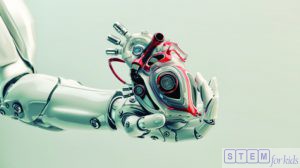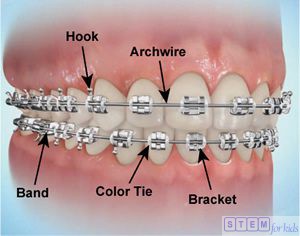STEM education can make you a(n).........FUEL CELL ENGINEER!
Job Title - Fuel Cell Engineer, designs, evaluates, modifies, or constructs fuel cell components or systems for transportation, stationary, or portable applications. Fuel cell is a source of energy that converts chemical energy into electrical energy. It uses hydrogen and an oxidant to create electrical energy using electrochemical process.
Fuel Cell Engineers typically do the following:
- Conduct fuel cell testing projects, using fuel cell test stations, analytical instruments, or electrochemical diagnostics, such as cyclic voltammetry or impedance spectroscopy.
- Design or implement fuel cell testing or development programs.
- Write technical reports or proposals related to engineering projects.
- Plan or implement fuel cell cost reduction or product improvement projects in collaboration with other engineers, suppliers, support personnel, or customers.
- Validate design of fuel cells, fuel cell components, or fuel cell systems.
Potential Employers - Professional, Scientific, and Technical Services, Manufacturing, Utilities, and more.
Education - Master's degree, Ph.D., M.D., or J.D. (law degree).
Salary - $50,000 - $120,000/year
Future - The overall job outlook for Fuel Cell Engineers has been positive since 2004. Vacancies for this career have increased by 8.01 percent nationwide in that time, with an average growth of 1.34 percent per year. Demand for Fuel Cell Engineers is expected to go up, with an expected 18,700 new jobs filled by this year. This represents an annual increase of 1.00 percent over the next few years.
Fuel cell is a clean source of energy. After the electrochemical process that creates electricity, the by-product from a fuel cell is water. Hydrogen is high in energy, yet an engine that burns pure hydrogen produces almost no pollution. NASA has used liquid hydrogen since the 1970s to propel the space shuttle and other rockets into orbit. Hydrogen fuel cells power the shuttle's electrical systems, producing a clean byproduct - pure water, which the crew drinks.
As humans explore options for sustainable energy sources, Fuel Cell is considered a strong contender among the other renewable sources of energy.
** Source - Onet Online
STEM education can make you a(n).........ASTRONAUT!
 Job Title - Astronaut, a person who travels beyond the earth's atmosphere; A person trained by a human spaceflight program to command, pilot, or serve as a crew member of a spacecraft. The term "Astronaut" derives from Greek words meaning "space sailor". To become an Astronaut takes many years of education and experience to meet the basic qualifications. Many people aren't accepted on the first try, either, requiring them to learn more to be better prepared for the next try. Even then, only a small percentage of applicants become Astronaut candidates, making it a hard job to get.
Job Title - Astronaut, a person who travels beyond the earth's atmosphere; A person trained by a human spaceflight program to command, pilot, or serve as a crew member of a spacecraft. The term "Astronaut" derives from Greek words meaning "space sailor". To become an Astronaut takes many years of education and experience to meet the basic qualifications. Many people aren't accepted on the first try, either, requiring them to learn more to be better prepared for the next try. Even then, only a small percentage of applicants become Astronaut candidates, making it a hard job to get.
The first step to being an Astronaut is getting relevant experience in school. There are two main classes of astronaut applicants: military applicants and civilian applicants. Military application procedures vary depending on the branch of the U.S. armed forces you are working for, since you apply through your respective branch. Civilians apply to NASA directly.
No matter the background, NASA wants its astronauts to have at least a bachelor's degree in engineering, biological science, physical science or mathematics. Many Astronauts have a master's degree or even a Ph.D. in their field.
Office - Outer space missions, on-earth training center
Potential Employers - Space Agencies such as NASA
Education - Degree in Engineering, Biological Science, Physical Science, Computer science or Mathematics. Soft-skills such as leadership, teamwork, and communications
Salary - $65,000 - $141,000 per year
Future - Mission to Mars, Mission to International Space Station, Mission on the future Orion-Multipurpose Crew Vehicle to asteroids, Moon, and Mars. With the new commercial players such as SpaceX, Virgin Galactic, and Blue Origin, the Space industry is bound to innovate and grow leaps and bounds. The growth in Space industry will create more jobs that can only be filled by people who have a background in STEM.
Many of the NASA's new hires have a shared trait - Interest in STEM
SpaceX co-founder Tom Mueller owes career in rocket science to a strong foundation in STEM fields.
NASA Astronaut talks about the importance of STEM
Humanity's interest in the heavens has been universal and enduring. Humans are driven to explore the unknown, discover new worlds, push the boundaries of our scientific and technical limits, and then push further. The intangible desire to explore and challenge the boundaries of what we know and where we have been has provided benefits to our society for centuries.
Twenty years from now you will be more disappointed by the things you didn't do than by the ones you did do. So throw off the bowlines, sail away from the safe harbor. Catch the trade winds in your sails. Explore. Dream. Discover. - Mark Twain.
We often limit kids to learning one or two aspects of STEM like "Robotics" or "Computer Programming", however, to be successful the kids need to have a more comprehensive understanding of all aspects of STEM, like Mechanical Engineering, Electrical Engineering, Biomedical Engineering, Civil Engineering, Sustainable Engineering and more.
Even if you are someone who writes code for your job, you need to understand how mechanical things work. We are looking for people that had been building things since they were little. - Dolly Singh, Former Head of Talent Acquisition at SpaceX
So, let's work together and give the kids this very important, and comprehensive STEM foundation to build the future full of opportunities and exploration.
STEM education can make you a(n).........BIOMEDICAL ENGINEER!
Job Title - Biomedical Engineering, is the application of engineering principles and design concepts to medicine and biology for healthcare purposes (e.g. diagnostic or therapeutic). This field seeks to close the gap between engineering and medicine, combining the design and problem-solving skills of enginee ring with medical biological sciences to advance health care treatment, including diagnosis, monitoring, and therapy.
ring with medical biological sciences to advance health care treatment, including diagnosis, monitoring, and therapy.
Biomedical engineering has long been a driver of advances in healthcare. From new technologies to diagnose and treat some of the most complex diseases to advances that improve quality of life for everyone, the work taking place in labs around the world right now is likely to change the face of healthcare in both the short- and long-term future.
Biomedical engineers differ from other engineering disciplines that have an influence on human health in that biomedical engineers use and apply an intimate knowledge of modern biological principles in their engineering design process. Aspects of mechanical engineering, electrical engineering, chemical engineering, materials science, chemistry, mathematics, and computer science and engineering are all integrated with human biology in biomedical engineering to improve human health, whether it be an advanced prosthetic limb or a breakthrough in identifying proteins within cells.
Potential Employers - Hospitals, Drug makers, Device makers, Government, Software Companies, Laboratories.
Education - Bachelors/Masters/PhD degree in Biomedical Engineering and a state license
Salary - $65,000 - $134,500
Future - Medical diagnostics triple in market value each year. Revolutionary advances in medical imaging and medical diagnostics are changing the way medicine is practiced. The future of biomedical engineering is tied to both the issues and obstacles we discover and advances and achievements in fields like chemistry, materials science, and biology. These future advancements require a strong background in STEM to be successful.
What is Biomedical Engineering?
Victoria - Biomedical Engineer - Women in STEM
TedxStanford - Neural Prosthetics
In 2012 there were about 19,400 Biomedical Engineers employed in the US. The field is expected to grow by 27% from 2012 to 2022. Biomedical engineering has the highest percentage of women engineers compared to other common engineering professions.
STEM education can make you a(n).........COMPUTER HARDWARE ENGINEER!
Job Title - Computer Hardware Engineer, researches, designs, develops and tests computer systems and components such as processors, circuit boards, memory devices, networks, and routers. Computer hardware engineers ensure that computer hardware components work together with the latest software. 
Computer hardware engineers typically do the following:
- Design new computer hardware, creating blueprints of computer equipment to be built
- Test the completed models of the computer hardware they design
- Analyze the test results and modify the design as needed
- Update existing computer equipment so that it will work with new software
- Oversee the manufacturing process for computer hardware
Computer hardware engineers analyze complex equipment to determine the best way to improve it. They design new types of information technology devices. They use logic and reasoning to clarify goals, examine assumptions, and identify the strengths and weaknesses of alternative solutions to problems. They identify complex problems in computer hardware, develop and evaluate possible solutions, and figure out the best way to implement them. Engineers often work in teams and must be able to communicate with other types of engineers as well as with non-technical team members.
Potential Employers - Computer and equipment manufacturers like Dell, Apple, HP, Semiconductor manufacturers like Intel, Federal Government, R&D in Engineering firms
Education - Bachelors/Masters degree in Computer Engineering, Electrical Engineering, Computer Science
Salary - $66,000 - $176,900 & more
Future - Employment of computer hardware engineers is projected to grow 5 percent from 2016 to 2026, about as fast as the average for all occupations. A limited number of engineers will be needed to meet the demand for new computer hardware because more technological innovation takes place with software than with hardware. However, demand may grow for hardware engineers as more industries outside of the computer and electronic product manufacturing industry begin to research and develop their own electronic devices.
An increase in hardware startup firms and the ongoing increase in devices with computer chips embedded in them, such as household appliances, medical devices, and automobiles, may lead to some job growth for computer hardware engineers.
What do computer hardware Engineers do?
** Source - Bureau of Labor Statistics
STEM education can make you a(n).........DENTIST!
Job Title - Dentist, diagnoses and treats problems with patients’ teeth, gums, and related parts of the mouth. They provide advice and instruction on taking care of the teeth and gums and on diet choices that affect oral health.
Dentists typically do the following:
-
- Remove decay from teeth and fill cavities
- Repair cracked or fractured teeth and remove teeth
- Place sealants or whitening agents on teeth
- Administer anesthetics to keep patients from feeling pain during procedures
- Prescribe antibiotics or other medications
- Examine x rays of teeth, gums, the jaw, and nearby areas in order to diagnose problems
- Make models and measurements for dental appliances, such as dentures, to fit patients
- Teach patients about diets, flossing, the use of fluoride, and other aspects of dental care
Dentists use a variety of equipment, including x-ray machines, drills, mouth mirrors, probes, forceps, brushes, and scalpels. They also use lasers, digital scanners, and other computer technologies.
Potential Employers - Offices of Dentists, self-employed workers, Government, Office of Physicians, Outpatient care center
Education - Courses in Biology, Physics, Maths and Chemistry, Bachelors degree
Salary - Median pay of $158,120
Future - Overall employment of dentists is projected to grow 19 percent from 2016 to 2026, much faster than the average for all occupations.
Demand for dental services will increase as the population ages. Many members of the aging baby-boom generation will need dental work. Because those in each generation are more likely to keep their teeth than those in past generations, more dental care will be needed in the years to come. In addition, there will be increased demand for complicated dental work, including dental implants and bridges. The risk of oral cancer increases significantly with age, and complications can require both cosmetic and functional dental reconstruction.
Demand for dentists’ services will increase as studies continue to link oral health to overall health. They will need to provide care and instruction aimed at promoting good oral hygiene, rather than just providing treatments such as fillings.
How long does it take to become a dentist?
** Source - Bureau of Labor Statistics
STEM education can make you a(n).........ELECTRICAL ENGINEER!
Job Title - Electrical Engineer, design, develop, test, and supervise the manufacturing of electrical equipment, such as electric motors, radar and navigation systems, communications systems, or power generation equipment. Electrical engineers also design the electrical systems of automobiles and aircraft.
Electrical Engineers typically do the following:
- Design new ways to use electrical power to develop or improve products
- Perform detailed calculations to develop manufacturing, construction, and installation standards and specifications
- Direct the manufacture, installation, and testing of electrical equipment to ensure that products meet specifications and codes
- Investigate complaints from customers or the public, evaluate problems, and recommend solutions
- Work with project managers on production efforts to ensure that projects are completed satisfactorily, on time, and within budget
Potential Employers - Professional, Scientific, and Technical Services, Manufacturing, Utilities, and more.
Education - Bachelor's degree in Electrical Engineering and related field
Salary - $60,000 - $150,000/year
Future - Overall employment of electrical engineers is projected to grow 7 percent from 2016 to 2026, about as fast as the average for all occupations.
Job growth for electrical engineers is projected to occur largely in engineering services firms, as more companies are expected to tap the expertise of engineers in this industry for projects involving electronic devices and systems. These engineers also will remain in demand to develop sophisticated consumer electronics.
The rapid pace of technological innovation will likely drive demand for electrical engineers in research and development, an area in which engineering expertise will be needed to design distribution systems related to new technologies. These engineers will play key roles in new developments with solar arrays, semiconductors, and communications technologies. The need to upgrade the nation’s power grids will also create demand for electrical engineering services. Additionally, these engineers may play a role in assisting with the automation of various production processes.
What is Electrical Engineering?
Electrical Engineering, What can you do with your degree?
** Source - Bureau of Labor Statistics
STEM education can make you a(n).........GENETICIST!
Job Title - Geneticist, researches, and studies the inheritance of traits at the molecular, organism or population level. May evaluate or treat patients with genetic disorders.
Geneticists typically do the following:
- Review, approve or interpret genetic laboratory results.

- Evaluate, diagnose, or treat genetic diseases.
- Maintain laboratory notebooks that record research methods, procedures, and results.
- Write grants and papers or attend fundraising events to seek research funds.
- Attend clinical and research conferences and read scientific literature to keep abreast of technological advances and current genetic research findings.
Potential Employers - Universities, Professional, and Scientific Services, Laboratories, Research Institutes and more.
Education - Master's degree, Ph.D., Post-Doctoral training.
Median Salary - $77,000/year
Future - Over the next 10 years or so, there are predictions that we're going to have up to a billion genomes sequenced and most of these are going to be sequenced in the healthcare setting. As the processing speeds of computers continue to improve and cloud computing becomes mainstream, it allows processing of enormous quantities of genetic data to produce useful results.
As new technologies like CRISPR develop which allow an experimental approach to making precise changes to the human genome, the future of Geneticist is bright.
As humans explore options for sustainable energy sources, Fuel Cell is considered a strong contender among the other renewable sources of energy.
The role of Medical Geneticist.
** Source - Onet Online
STEM education can make you a(n).........HYDROLOGIST!
Job Title - Hydrologist, researches the distribution, circulation, and physical properties of underground and surface waters; and studies the form and intensity of precipitation, its rate of infiltration into the soil, movement through the earth, and its return to the ocean and atmosphere.
Hydrologists typically do the following:
- Measure the properties of bodies of water, such as volume and stream flow

- Collect water and soil samples to test for certain properties, such as the pH or pollution levels
- Analyze data on the environmental impacts of pollution, erosion, drought, and other problems
- Research ways to minimize the negative impacts of erosion, sedimentation, or pollution on the environment
- Use computer models to forecast future water supplies, the spread of pollution, floods, and other events
- Evaluate the feasibility of water-related projects, such as hydroelectric power plants, irrigation systems, and wastewater treatment facilities
- Prepare written reports and presentations of their findings
Hydrologists may use remote sensing equipment to collect data. They, or technicians whom they supervise, usually install and maintain this equipment. Hydrologists also use sophisticated computer programs to analyze the data collected. Computer models are often developed by hydrologists to help them understand complex datasets.
Hydrologists work closely with engineers, scientists, and public officials to study and manage the water supply. For example, they work with policymakers to develop water conservation plans and with biologists to monitor wildlife in order to allow for their water needs.
Most hydrologists specialize in a particular water source or a certain aspect of the water cycle, such as the evaporation of water from lakes and streams. The following are examples of types of hydrologists:
Groundwater hydrologists study the water below the Earth’s surface. Some groundwater hydrologists focus on water supply and decide the best locations for wells and the amount of water available for pumping. Other groundwater hydrologists focus on the cleanup of groundwater contaminated by spilled chemicals at a factory, an airport, or a gas station. These hydrologists often give advice about the best places to build waste disposal sites to ensure that groundwater is not contaminated.
Surface water hydrologists study water from aboveground sources such as streams, lakes, and snowpacks. They may predict future water levels by tracking usage and precipitation data to help reservoir managers decide when to release or store water. They also produce flood forecasts and help develop flood management plans.
Potential Employers - Federal Government, State Government, Management, Engineering, and Scientific Services, Local Government
Education - Bachelor's degree, Master's degree, Ph.D. in Hydrology. Important qualities in a candidate include Communication Skills, Analytical Skills, Critical thinking, physical stamina and interpersonal skills.
Salary - $50,900/year - $122,870/year
Future -
Employment of hydrologists is projected to grow 10 percent from 2016 to 2026, faster than the average for all occupations. Demand for the services of hydrologists will stem from increases in human activities such as mining, construction, and hydraulic fracturing. Environmental concerns, especially global climate change and the possibility of sea-level rise in addition to local concerns such as flooding and drought, are likely to increase demand for hydrologists in the future.
Managing the nation’s water resources will be critical as the population grows and increased human activity changes the natural water cycle. Population expansion into areas that were previously uninhabited may increase the risk of flooding, and new communities may encounter water availability issues. These issues will all need the understanding and knowledge that hydrologists have to find sustainable solutions. However, as governments are the main consumers of hydrologic information, budget constraints will limit growth.
Hydrologists will be necessary to assess the threats that global climate change poses to local, state, and national water supplies. For example, changes in climate affect the severity and frequency of droughts and floods. Hydrologists are critical to developing comprehensive water management plans that address these and other problems linked to climate change.
Career Advice on becoming a hydrologist
** Source - Onet Online, Bureau of Labor Statistics
STEM education can make you a(n).........INFORMATION SECURITY ANALYST!
Job Title - Information Security Analyst, plan and carry out security measures to protect an organization’s computer networks and systems. Their responsibilities are continually expanding as the number of cyberattacks increases.
Information security analysts typically do the following:
- Monitor their organization’s networks for security breaches and investigate a violation when one occurs

- Install and use software, such as firewalls and data encryption programs, to protect sensitive information
- Prepare reports that document security breaches and the extent of the damage caused by the breaches
- Conduct penetration testing, which is when analysts simulate attacks to look for vulnerabilities in their systems before they can be exploited
- Research the latest information technology (IT) security trends
- Develop security standards and best practices for their organization
- Recommend security enhancements to management or senior IT staff
- Help computer users when they need to install or learn about new security products and procedures
IT security analysts are heavily involved with creating their organization’s disaster recovery plan, a procedure that IT employees follow in case of emergency. These plans allow for the continued operation of an organization’s IT department. The recovery plan includes preventive measures such as regularly copying and transferring data to an offsite location. It also involves plans to restore proper IT functioning after a disaster. Analysts continually test the steps in their recovery plans.
Information security analysts must stay up to date on IT security and on the latest methods attackers are using to infiltrate computer systems. Analysts need to research new security technology to decide what will most effectively protect their organization.
Education - At least a Bachelor's degree in computer science, information assurance, programming, or a related field. Master of Business Administration (MBA) in information systems
Salary - $55,000/year - $153,000/year
Future - Employment of information security analysts is projected to grow 28 percent from 2016 to 2026, much faster than the average for all occupations.
Demand for information security analysts is expected to be very high. Cyber attacks have grown in frequency, and analysts will be needed to come up with innovative solutions to prevent hackers from stealing critical information or creating problems for computer networks.
Banks and financial institutions, as well as other types of corporations, will need to increase their information security capabilities in the face of growing cybersecurity threats. In addition, as the healthcare industry expands its use of electronic medical records, ensuring patients’ privacy and protecting personal data are becoming more important. More information security analysts are likely to be needed to create the safeguards that will satisfy patients’ concerns.
Employment of information security analysts is projected to grow 56 percent in computer systems design and related services from 2016 to 2026. The increasing adoption of cloud services by small and medium-sized businesses and a rise in cybersecurity threats will create demand for managed security services providers in this industry.
A day in the life of security analyst
Information Security Analyst career video
** Source - Onet Online, Bureau of Labor Statistics
STEM education can make you a(n).........LICENSED NURSE!
Job Title - Licensed Nurse, provide and coordinate patient care, educate patients and the public about various health conditions, and provide advice and emotional support to patients and their family members.
Licensed Nurses typically do the following:
- Assess patients’ conditions
- Record patients’ medical histories and symptoms
- Observe patients and record the observations
- Administer patients’ medicines and treatments
- Set up plans for patients’ care or contribute information to existing plans
- Consult and collaborate with doctors and other healthcare professionals
- Operate and monitor medical equipment
- Help perform diagnostic tests and analyze the results
- Teach patients and their families how to manage illnesses or injuries
- Explain what to do at home after treatment
Licensed nurses’ duties and titles often depend on where they work and the patients they work with. For example, an oncology nurse may work with cancer patients or a geriatric nurse may work with elderly patients. Some nurses combine one or more areas of practice. For example, a pediatric oncology nurse works with children and teens who have cancer.
Many possibilities for working with specific patient groups exist. The following list includes just a few examples:
Addiction nurses care for patients who need help to overcome addictions to alcohol, drugs, and other substances.
Cardiovascular nurses care for patients with heart disease and people who have had heart surgery.
Critical care nurses work in intensive-care units in hospitals, providing care to patients with serious, complex, and acute illnesses and injuries that need very close monitoring and treatment.
Genetics nurses provide screening, counseling, and treatment for patients with genetic disorders, such as cystic fibrosis.
Neonatology nurses take care of newborn babies.
Nephrology nurses care for patients who have kidney-related health issues stemming from diabetes, high blood pressure, substance abuse, or other causes.
Public health nurses promote public health by educating people on warning signs and symptoms of a disease or managing chronic health conditions. They may also run health screenings, immunization clinics, blood drives, or other community outreach programs.
Rehabilitation nurses care for patients with temporary or permanent disabilities.
Some nurses do not work directly with patients, but they must still have an active registered nurse license. For example, they may work as nurse educators, healthcare consultants, public policy advisors, researchers, hospital administrators, salespeople for pharmaceutical and medical supply companies, or as medical writers and editors.
Education - In all nursing education programs, students take courses in anatomy, physiology, microbiology, chemistry, nutrition, psychology, and other social and behavioral sciences, as well as in liberal arts. Bachelor’s degree programs usually include additional education in the physical and social sciences, communication, leadership, and critical thinking. These programs also offer more clinical experience in nonhospital settings. There are also master’s degree programs in nursing, combined bachelor’s and master’s programs, and accelerated programs for those who wish to enter the nursing profession and already hold a bachelor’s degree in another field. Some employers offer tuition reimbursement. In all states, the District of Columbia, and U.S. territories, registered nurses must have a nursing license. To become licensed, nurses must graduate from an approved nursing program and pass the National Council Licensure Examination (NCLEX-RN).
Salary - $49,000/year - $104,000/year
Future - Employment of registered nurses is projected to grow 15 percent from 2016 to 2026, much faster than the average for all occupations. Growth will occur for a number of reasons.
Demand for healthcare services will increase because of the aging population, given that older people typically have more medical problems than younger people. Nurses also will be needed to educate and care for patients with various chronic conditions, such as arthritis, dementia, diabetes, and obesity.
Growth is also expected to be faster than average in outpatient care centers, where patients do not stay overnight, such as those which provide same-day chemotherapy, rehabilitation, and surgery. In addition, an increased number of procedures, as well as more sophisticated procedures previously done only in hospitals, are being performed in ambulatory care settings and physicians’ offices.
** Source - Onet Online, Bureau of Labor Statistics
STEM education can make you a(n).........MECHANICAL ENGINEER!
Job Title - Mechanical Engineers, design, develop, build, and test mechanical and thermal sensors and devices, including tools, engines, and machines.
Mechanical Engineers typically do the following:
- Analyze problems to see how mechanical and thermal devices might help solve a particular problem

- Design or redesign mechanical and thermal devices or subsystems, using analysis and computer-aided design
- Investigate equipment failures or difficulties to diagnose faulty operation and to recommend remedies
- Develop and test prototypes of devices they design
- Analyze the test results and change the design or system as needed
- Oversee the manufacturing process for the device
Mechanical engineering is one of the broadest engineering fields. Mechanical engineers design and oversee the manufacture of many products ranging from medical devices to new batteries.
Mechanical engineers design power-producing machines, such as electric generators, internal combustion engines, and steam and gas turbines, as well as power-using machines, such as refrigeration and air-conditioning systems.
Mechanical engineers design other machines inside buildings, such as elevators and escalators. They also design material-handling systems, such as conveyor systems and automated transfer stations.
Like other engineers, mechanical engineers use computers extensively. Mechanical engineers are routinely responsible for the integration of sensors, controllers, and machinery. Computer technology helps mechanical engineers create and analyze designs, run simulations and test how a machine is likely to work, interact with connected systems, and generate specifications for parts.
The following are examples of types of mechanical engineers:
Auto research engineers seek to improve the performance of cars. These engineers work to improve the traditional features of cars such as suspension, and they also work on aerodynamics and new possible fuels.
Heating and cooling systems engineers work to create and maintain environmental systems wherever temperatures and humidity must be kept within certain limits. They develop such systems for airplanes, trains, cars, schools, and even computer rooms.
Robotic engineers plan, build, and maintain robots. These engineers plan how robots will use sensors for detecting things based on light or smell, and they design how these sensors will fit into the designs of the robots.
What is Mechanical Engineering?
Day in the Life: Mechanical Engineer
Meet the Mechanical Engineers at Google
Education - Bachelors/Masters degree in Mechanical Engineering.
Salary - $55,000/year - $134,000/year
Future -Employment of mechanical engineers is projected to grow 9 percent from 2016 to 2026, as fast as the average for all occupations. Mechanical engineers can work in many industries and on many types of projects. As a result, their growth rate will differ by the industries that employ them.
Mechanical engineers are projected to experience faster than average growth in engineering services as companies continue to contract work from these firms. Mechanical engineers will also remain involved in various manufacturing industries, particularly in automotive manufacturing. These engineers will play key roles in improving the range and performance of hybrid and electric cars.
** Source - Bureau of Labor Statistics
STEM education can make you a(n).........ORTHODONTIST!
Job Title - Orthodontists, examine, diagnose, and treat dental malocclusions and oral cavity anomalies. Design and fabricate appliances to realign teeth and jaws to produce and maintain normal function and to improve appearance.
Orthodontists typically do the following:
- Study diagnostic records, such as medical or dental histories, plaster models of the teeth, photos of a patient's face and teeth, and X-rays, to develop patient treatment plans.
- Adjust dental appliances to produce and maintain normal function.
- Fit dental appliances in patients' mouths to alter the position and relationship of teeth and jaws or to realign teeth.
- Diagnose teeth and jaw or other dental-facial abnormalities.
- Examine patients to assess abnormalities of jaw development, tooth position, and other dental-facial structures.
They could examine patients, develop treatment plans and prepare patients for orthodontic services. Orthodontists could also work with orthodontic technicians and instruct them about what procedures patients need to undergo. Because of the nature of orthodontics, they could see patients on a monthly basis and treat their orthodontic issues until their treatments are complete.
A day in the Life of Orthodontist
Education - Doctor of Dental Medicine (DMD) degree, a post-graduate training program in orthodontics which often leads to a master's degree in orthodontics, oral science or oral biology, an orthodontics certificate or a Ph.D
Salary - $221,390 - Average Salary
Potential Employers - Offices of dentists, physicians, health practitioners, medical and surgical hospitals.
Future -In 2014, Bureau of Labor Statistics reported that orthodontists made up the largest group of dental specialists in the United States. There were approximately 9,700 orthodontists in the U.S. in 2014, and the number of positions was expected to increase by 18% between 2014-2024, which is faster than average.
** Source - Bureau of Labor Statistics
STEM education can make you a(n).........PHYSICIST & ASTRONOMER!
Job Title - Physicist & Astronomer, study the ways in which various forms of matter and energy interact. Theoretical physicists and astronomers may study the nature of time or the origin of the universe. Some physicists design and perform experiments with sophisticated equipment such as particle accelerators, electron microscopes, and lasers.
Physicists & Astronomers typically do the following:
- Develop scientific theories and models that attempt to explain the properties of the natural world, such as the force of gravity or the formation of sub-atomic particles
- Plan and conduct scientific experiments and studies to test theories and discover properties of matter and energy
- Write proposals and apply for funding to conduct research
- Do complex mathematical calculations to analyze physical and astronomical data, such as data that may indicate the existence of planets in distant solar systems or new properties of materials
- Design new scientific equipment, such as telescopes and lasers
- Develop computer software to analyze and model data
- Write scientific papers that may be published in scholarly journals
- Present research findings at scientific conferences and lectures
Physicists explore the fundamental properties and laws that govern space, time, energy, and matter. Some physicists study theoretical areas, such as the fundamental properties of atoms and molecules and the evolution of the universe. Others design and perform experiments with sophisticated equipment such as particle accelerators, electron microscopes, and lasers. Many apply their knowledge of physics to practical objectives, such as developing advanced materials and medical equipment.
Astronomers study planets, stars, galaxies, and other celestial bodies. They use ground-based equipment, such as radio and optical telescopes, and space-based equipment, such as the Hubble Space Telescope. Some astronomers study distant stars, galaxies, and phenomena such as neutron stars and black holes, and others monitor space debris that could interfere with satellite operations.
Many physicists and astronomers work in basic research with the aim of increasing scientific knowledge. These researchers may attempt to develop theories that better explain what gravity is or how the universe works or was formed. Other physicists and astronomers work in applied research. They use the knowledge gained from basic research to affect new developments in areas such as energy storage, electronics, communications, navigation, and medical technology.
Physicist & Astronomer Career video
Education - Physicists and astronomers typically need a Ph.D. for jobs in research and academia. However, physicist jobs in the federal government typically require a bachelor’s degree in physics.
Salary - $54,000 - more than $165,000
Potential Employers - The largest employers of astronomers - Colleges, universities, and professional schools; state, local, and private
The largest employers of physicists - Scientific research and development services, Colleges, universities, and professional schools; state, local, and private.
Future -
Overall employment of physicists and astronomers is projected to grow 14 percent from 2016 to 2026, faster than the average for all occupations.
Physicists are projected to have employment growth in scientific research and development services, educational services, and health care and social assistance. The fast growth will result in only about 2,600 new jobs over the 10-year period.
An astronomer is a small occupation, and the fast growth will result in only about 200 new jobs over the 10-year period.
Federal spending is the primary source of physics- and astronomy-related research funds, especially for basic research. Growth in the federal government’s spending for research in physics and astronomy is expected to be more or less flat, and this will dampen the need for physicists and astronomers at institutions heavily dependent on such funding.
** Source - Bureau of Labor Statistics
STEM education can make you a(n).........ROBOTICS ENGINEER!
Job Title - Robotics Engineer, design, build, test and implement automated and autonomous mechanical devices using computer-aided design and drafting software and other computer tools and programs
Robotics Engineers typically do the following:
- Design mechanical devices.
- Researching existing robotic equipment, processes, and specifications
- Assembling components
- Writing control software or applying existing code
- Testing and debugging.
- Collaborate with a team of engineers and technicians to solve problems and improve the technology.
- Integrate robots with existing manufacturing equipment and processes, observe their performance, and investigate failures or providing other technical support.
Robotics Engineers review or approve designs, calculations, or cost estimates. They process and interpret signals or sensor data. Robotics Engineers also debug the robotics program, build, configure, and test robots.
Day in the life: Robotics Engineer
Career spotlight: Robotics Engineer
Education - Bachelor's and/or Masters degree programs in electronics engineering and mechanical engineering
Salary - Median salary $98,270
Potential Employers - The largest employers of Robotics Engineers are Government agencies and manufacturing firms.
Future - Robotics engineers were expected to see some employment growth in the coming years designing and maintaining robots, as well as studying these automated machines and developing applications for them. According to the U.S. Bureau of Labor Statistics (BLS), the mechanical engineering field, which includes robotics engineers, was projected to experience an average 5 percent employment growth from 2014 to 2024. A factor of this increase is the growing demand for the machines these professionals design as well as the emergence of new technologies.
** Source - Bureau of Labor Statistics, learn.org,
STEM education can make you a(n).........SOFTWARE DEVELOPER!
Job Title - Software Developers are the creative minds behind computer programs. Some develop the applications that allow people to do specific tasks on a computer or another device. Others develop the underlying systems that run the devices or that control networks.
Software Developers typically do the following:
- Analyze users’ needs and then design, test, and develop software to meet those needs

- Recommend software upgrades for customers’ existing programs and systems
- Design each piece of an application or system and plan how the pieces will work together
- Create a variety of models and diagrams (such as flowcharts) that show programmers the software code needed for an application
- Ensure that a program continues to function normally through software maintenance and testing
- Document every aspect of an application or system as a reference for future maintenance and upgrades
- Collaborate with other computer specialists to create optimum software
Software developers are in charge of the entire development process for a software program. They may begin by asking how the customer plans to use the software. They must identify the core functionality that users need from software programs. Software developers must also determine user requirements that are unrelated to the functions of the software, such as the level of security and performance needs. They design the program and then give instructions to programmers, who write computer code and test it.
If the program does not work as expected or if testers find it too difficult to use, software developers go back to the design process to fix the problems or improve the program. After the program is released to the customer, a developer may perform upgrades and maintenance.
Day in the life: Software Developer
Differences between a Software Developer and a Software Engineer
Education - Software developers usually have a bachelor’s degree, typically in computer science, software engineering, or a related field
Salary - $65,000 - $164,000
Potential Employers - The largest employers of Software Developers are Computer Systems designs and related services, and Finance & Insurance.
Future - Employment of software developers is projected to grow 24 percent from 2016 to 2026, much faster than the average for all occupations. Employment of applications developers is projected to grow 31 percent, and employment of systems developers is projected to grow 11 percent. The main reason for the growth in both applications developers and systems developers is a large increase in the demand for computer software.
Job prospects will be best for applicants with knowledge of the most up-to-date programming tools and for those who are proficient in one or more programming languages.
** Source - Bureau of Labor Statistics
STEM education can make you a(n).........SURGEON!
Job Title - Surgeons specialize in the diagnosis and preoperative, operative, and postoperative management of patient care. They must be knowledgeable of anatomy, emergency and intensive care, immunology, metabolism, nutrition, pathology, physiology, shock, and resuscitation, and wound healing. Surgeons can be trained in 14 different area and are specifically trained in this during there residency or fellowships. It varies from pediatric, cardio, vascular, orthopedic, or neurological for example. Physicians who treat diseases, injuries, and deformities by invasive, minimally-invasive, or non-invasive surgical methods, such as using instruments, appliances, or by manual manipulation.
Surgeons do the following tasks:
- Take a patient’s medical history

- Update charts and patient information to show current findings and treatments
- Order tests for nurses or other healthcare staff to perform
- Review test results to identify any abnormal findings
- Recommend and design a plan of treatment
- Address concerns or answer questions that patients have about their health and well-being
- Help patients take care of their health by discussing topics such as proper nutrition and hygiene
Surgeons treat injuries, diseases, and deformities through operations. Using a variety of instruments, a surgeon corrects physical deformities, repairs bone and tissue after injuries, or performs preventive or elective surgeries on patients. Although a large number perform general surgery, many surgeons choose to specialize in a specific area. Specialties include orthopedic surgery (the treatment of the musculoskeletal system), neurological surgery (treatment of the brain and nervous system), cardiovascular surgery, and plastic or reconstructive surgery. Like other physicians, surgeons examine patients, perform and interpret diagnostic tests, and counsel patients on preventive healthcare. Some specialist physicians also perform surgery.
Education - Bachelor’s degree and then medical school. Complete a residency or fellowship training.
Salary - Median salary $252,910 as of 2017.
Potential Employers - Most of the Surgeons are hired by hospitals and private practices.
Future - Demand for surgeons is expected to increase despite factors that can temper growth. New technologies, such as improved information technologies or remote monitoring, are expected to allow physicians to treat more patients in the same amount of time.
The growing and aging population is expected to drive overall growth in the demand for physician services. As the older population grows and rates of chronic illnesses increase, consumers will seek high levels of care that use the latest technologies, diagnostic tests, and therapies.
** Source - Bureau of Labor Statistics, www.yourfreecareertest.com
STEM education can make you a(n).........MULTIMEDIA ARTISTS AND ANIMATORS!
Job Title - Multimedia Artists and Animators create two- and three-dimensional models, animation, and visual effects for television, movies, video games, and other forms of media.
Multimedia artists and animators typically do the following:
- Use computer programs and illustrations to create graphics and animation
- Work with a team of animators and artists to create a movie, game, or visual effect
- Research upcoming projects to help create realistic designs or animations
- Develop storyboards that map out key scenes in animations
- Edit animations and effects on the basis of feedback from directors, other animators, game designers, or clients
- Meet with clients, other animators, games designers, directors, and other staff (which may include actors) to review deadlines and development timelines
Multimedia artists and animators often work in a specific medium. Some focus on creating animated movies or video games. Others create visual effects for movies and television shows. Creating computer-generated images (known as CGI) may include taking images of an actor’s movements and then animating them into three-dimensional characters. Other animators design scenery or backgrounds for locations.
Artists and animators can further specialize in these fields. Within animated movies and video games, artists often specialize in characters or in scenery and background design. Video game artists may focus on level design: creating the look, feel, and layout for the levels of a video game.
Animators work in teams to develop a movie, a visual effect, or an electronic game. Each animator works on a portion of the project, and then the pieces are put together to create one cohesive animation.
Multimedia Artists and Animators
What do Multimedia Artists and Animators do?
Education - Employers typically require a bachelor’s degree, and they look for workers who have a good portfolio of work and strong technical skills. Multimedia artists and animators typically have a bachelor’s degree in fine art, computer graphics, animation, or a related field. Programs in computer graphics often include courses in computer science in addition to art courses.
Bachelor’s degree programs in art include courses in painting, drawing, and sculpture. Degrees in animation often require classes in drawing, animation, and film. Many schools have specialized degrees in topics such as interactive media or game design.
Salary - Median salary $70,530 as of 2017.
Potential Employers - Most of the Multimedia Artists and Animators are self-employed or employed in motion pictures and video industry.
Future - Employment of multimedia artists and animators is projected to grow 8 percent from 2016 to 2026, about as fast as the average for all occupations. Projected growth will be due to increased demand for animation and visual effects in video games, movies, and television.
** Source - Bureau of Labor Statistics
-
STEM education can make you a(n).........AEROSPACE ENGINEER!
Job Title - Aerospace Engineers design primarily aircraft, spacecraft, satellites, and missiles. In addition, they create and test prototypes to make sure that they function according to design.
Aerospace Engineers typically do the following:
- Direct and coordinate the design, manufacture, and testing of aircraft and aerospace products
- Assess proposals for projects to determine if they are technically and financially feasible
- Determine if proposed projects will result in safe operations that meet the defined goals
- Evaluate designs to see that the products meet engineering principles, customer requirements, and environmental regulations
- Develop acceptance criteria for design methods, quality standards, sustainment after delivery, and completion dates
- Ensure that projects meet quality standards
- Inspect malfunctioning or damaged products to identify sources of problems and possible solutions
Aerospace engineers may develop new technologies for use in aviation, defense systems, and spacecraft. They often specialize in areas such as aerodynamic fluid flow; structural design; guidance, navigation, and control; instrumentation and communication; robotics; and propulsion and combustion.
Aerospace engineers can specialize in designing different types of aerospace products, such as commercial and military airplanes and helicopters; remotely piloted aircraft and rotorcraft; spacecraft, including launch vehicles and satellites; and military missiles and rockets.
Aerospace Engineering - What is it?
What is Aerospace Engineering? (Aeronautics)
Education - Entry-level aerospace engineers usually need a bachelor’s degree. High school students interested in studying aerospace engineering should take courses in chemistry, physics, advanced math, and computer programming and computer languages.
Bachelor’s degree programs include classroom, laboratory, and field studies in subjects such as general engineering principles, propulsion, stability and control, structures, mechanics, and aerodynamics, which is the study of how air interacts with moving objects.
Salary - $71,000 to more than $162,000 as of 2017.
Potential Employers - Aerospace engineers are employed in industries in which workers design or build aircraft, missiles, systems for national defense, or spacecraft. They work primarily for firms that engage in manufacturing, analysis and design, research and development, and for the federal government
Future - Employment of aerospace engineers is projected to grow 6 percent from 2016 to 2026. Aircraft are being redesigned to cause less noise pollution and have better fuel efficiency, which will help sustain demand for research and development. Also, new developments in small satellites, such as cubesats, which are used for many purposes such as communications or gathering data, are now coming into greater commercial viability. Aerospace engineers will be well positioned to benefit from their increased use. The growing commercial viability of unmanned aerial systems will also help drive the growth of the occupation.
** Source - Bureau of Labor Statistics
-
STEM education can make you a(n).........CIVIL ENGINEER!
Job Title - Civil Engineers conceive, design, build, supervise, operate, construct, and maintain infrastructure projects and systems in the public and private sector, including roads, buildings, airports, tunnels, dams, bridges, and systems for water supply and sewage treatment. primarily aircraft, spacecraft, satellites, and missiles. In addition, they create and test prototypes to make sure that they function according to design.
Civil Engineers typically do the following:
- Analyze long-range plans, survey reports, maps, and other data to plan and design projects
- Consider construction costs, government regulations, potential environmental hazards, and other factors during the planning and risk-analysis stages of a project
- Compile and submit permit applications to local, state, and federal agencies, verifying that projects comply with various regulations
- Oversee and analyze the results of soil testing to determine the adequacy and strength of foundations
- Analyze the results of tests on building materials, such as concrete, wood, asphalt, or steel, for use in particular projects
- Prepare cost estimates for materials, equipment, or labor to determine a project’s economic feasibility
- Use design software to plan and design transportation systems, hydraulic systems, and structures in line with industry and government standards
- Perform or oversee surveying operations to establish building locations, site layouts, reference points, grades, and elevations to guide construction
- Manage the repair, maintenance, and replacement of public and private infrastructure
Civil engineers also must present their findings to the public on topics such as bid proposals, environmental impact statements, or property descriptions.
Many civil engineers hold supervisory or administrative positions ranging from supervisor of a construction site to the city engineer, public works director, and city manager. As supervisors, they are tasked with ensuring that safe work practices are followed at construction sites.
Civil engineers prepare permit documents for work on projects in renewable energy. They verify that the projects will comply with federal, state, and local requirements. These engineers conduct structural analyses for large-scale photovoltaic, or solar energy, projects. They also evaluate the ability of solar array support structures and buildings to tolerate stresses from wind, seismic activity, and other sources. For large-scale wind projects, civil engineers often prepare roadbeds to handle large trucks that haul in the turbines.
Education - Civil engineers need a bachelor’s degree in civil engineering, in one of its specialties, or in civil engineering technology. Programs in civil engineering and civil engineering technology include coursework in math, statistics, engineering mechanics and systems, and fluid dynamics, depending on the specialty. Courses include a mix of traditional classroom learning, work in laboratories, and fieldwork. Programs may include cooperative programs, also known as co-ops, in which students gain work experience while pursuing a degree.
Salary - $54,000 to more than $138,000 as of 2017.
Potential Employers - 48% of Civil Engineers are hired by Engineering Services firms. Civil Engineers are also hired by State & Local Governments, Federal Governments and construction firms.
Future - Employment of civil engineers is projected to grow 11 percent from 2016 to 2026, faster than the average for all occupations. As current U.S. infrastructure experiences growing obsolescence, civil engineers will be needed to manage projects to rebuild, repair, and upgrade bridges, roads, levees, dams, airports, buildings, and other structures.
** Source - Bureau of Labor Statistics
-
STEM education can make you a(n).........ENVIRONMENTAL ENGINEER!
Job Title - Environmental Engineers use the principles of engineering, soil science, biology, and chemistry to develop solutions to environmental problems. They are involved in efforts to improve recycling, waste disposal, public health, and water and air pollution control.
Environmental Engineers typically do the following:
- Prepare, review, and update environmental investigation reports
- Design projects that lead to environmental protection, such as water reclamation facilities or air pollution control systems
- Obtain, update, and maintain plans, permits, and standard operating procedures
- Provide technical support for environmental remediation projects and for legal actions
- Analyze scientific data and do quality-control checks
- Monitor the progress of environmental improvement programs
- Inspect industrial and municipal facilities and programs in order to ensure compliance with environmental regulations
- Advise corporations and government agencies about procedures for cleaning up contaminated sites
Environmental engineers conduct hazardous-waste management studies in which they evaluate the significance of a hazard and advise on treating and containing it. They also design systems for municipal and industrial water supplies and industrial wastewater treatment, and research the environmental impact of proposed construction projects. Environmental engineers in government develop regulations to prevent mishaps.
Some environmental engineers study ways to minimize the effects of acid rain, climate change, automobile emissions, and ozone depletion. They also collaborate with environmental scientists, urban and regional planners, hazardous-waste technicians, and other engineers, as well as with specialists such as experts in law and business, to address environmental problems and environmental sustainability.
Environmental Engineering career?
What do Environmental Engineers do?
Education -
Entry-level environmental engineering jobs require a bachelor’s degree. Programs include classroom, laboratory, and field studies. Some colleges and universities offer cooperative programs in which students gain practical experience while completing their education.
At some colleges and universities, a student can enroll in a 5-year program that leads to both a bachelor’s and a master’s degree. A graduate degree allows an engineer to work as an instructor at some colleges and universities or to do research and development, and employers may prefer candidates to have a master’s degree.
Students interested in becoming an environmental engineer should take high school courses in chemistry, biology, physics, and math, including algebra, trigonometry, and calculus.
Salary - $54,000 to more than $137,000 as of 2017.
Potential Employers - 25% of Environmental Engineers are hired by Engineering Services firms. Environmental Engineers are also hired by State & Local Governments, Federal Governments, and consulting firms.
Future - Employment of environmental engineers is projected to grow 8 percent from 2016 to 2026. State and local governments’ concerns about water are leading to efforts to increase the efficiency of water use. Such a focus differs from that of wastewater treatment, for which this occupation is traditionally known. Most of the projected employment growth for environmental engineers is in professional, scientific, and technical services, as governments at the state and local levels draw on the industry to help address water efficiency concerns.
** Source - Bureau of Labor Statistics
